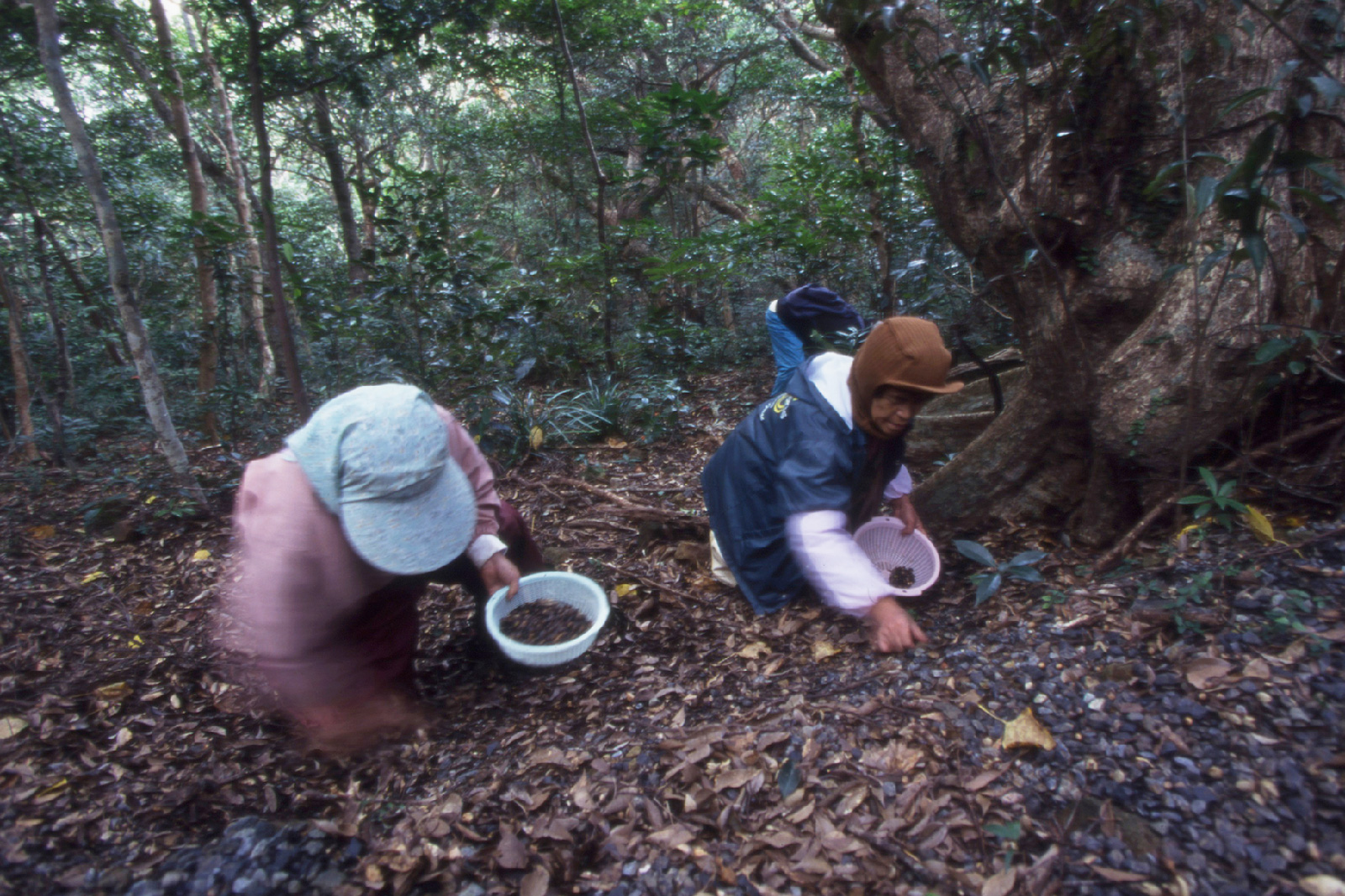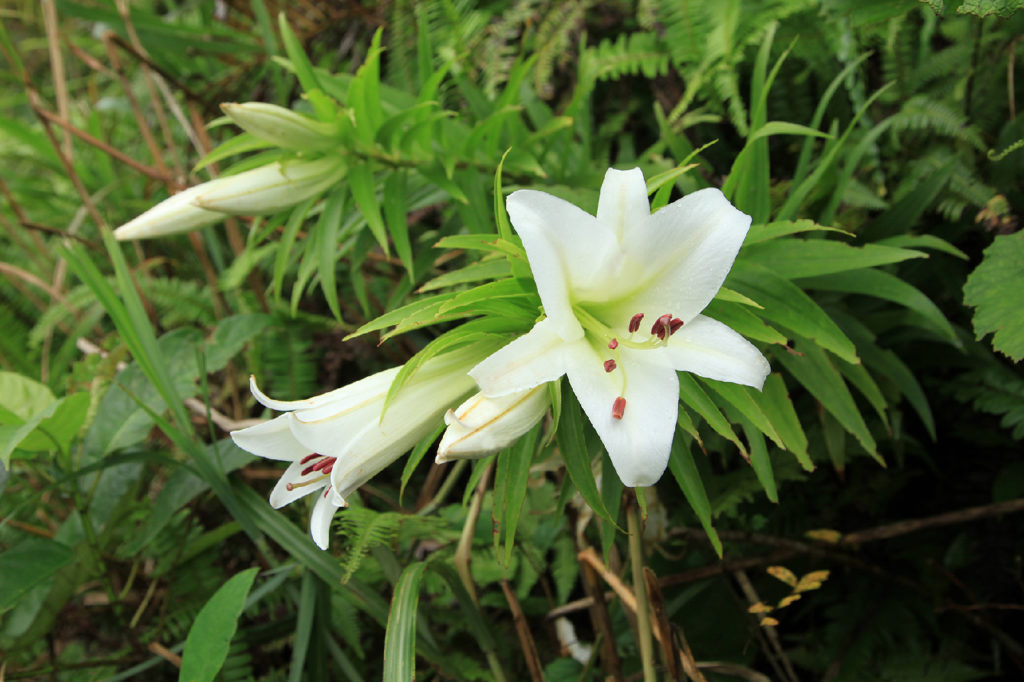
Plants of Forest
Gratitude for Forest Blessings (essay)
The old houses of forest-rich Amami Oshima and Tokunoshima were made of the trees on the islands, such as Iju (Schima liukiuens tree), Mokkoku (Japanese ternstroemia), Itajii (Japanese chinquapin) and Ryukyu pine. There was a time when mature trees in the forest supported the island’s economy as railway sleepers and pulpwood. Household fuel was firewood and charcoal from the island forest until the 1960s.
The forests produced nuts, young shoots, mushrooms and other nourishment that fed humans, birds and other animals, and helped people’s lives. In the olden days, people who depended on the forest for food and housing treated the forest as a sacred place with respect and awe. They always brought salt when they went to the forest and sprinkled salt lightly at the entrance, saying, “I’m going into the mountains” to get permission and pray for personal safety to the god of the forest. When cutting a tree, a person also said “please let me cut it,” for the forest god’s permission. Especially when cutting a big tree, people used to sprinkle salt around it and pray before putting an ax in it.
A poisonous snake called a habu also reigned in the forests of Amami Oshima and Tokunoshima, and acted like a guard to keep humans and other intruders away. People have worshiped it as a god while fearing the habu.
In this way, there was respect and caution when people used the forest back in the day. These people also only took the minimum amount of wood and nuts needed for daily life, so the forest and nature were always abundant. Like our ancestors who lived with gratitude for the rich forests and blessings of greenery, we also hope to cherish this forest forever.

Japanese chinquapin forest

Along a mountain stream
Photo / ©Futoshi Hamada





